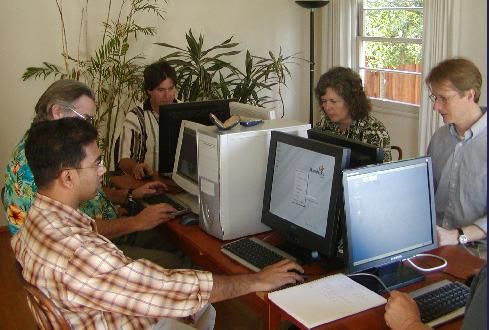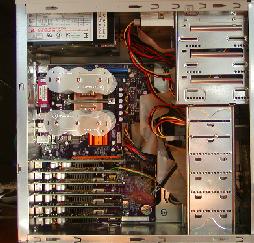- Mar 27, 2009
- 12,968
- 221
- 106
Please write down your requests.
Here aretwo three four five six seven eight of mine:
1.) More options for more affordable primary storage included on the chipset (eMMC 5.0, UFS 2.0, BGA SSD, etc)
2.) More video outputs for processors with iGPU. (Display Port, HDMI and at least two DVI-I would be a big improvement IMO over the current state of affairs: HDMI, DVI-D, VGA)
3.) ECC Capability on the APU AMD motherboards. (Some of the AM3+ boards had ECC Ram capability, so I would like this on other AMD platforms as well.)
Very late EDIT (8/5/2014, 2:06 pm pacific time):
4.) For processor refreshes (where yields on the node are much improved) I would like to see AMD combine their two lowest end enthusiast SKUs (Athlon x4 860K and A6-7400K for Kaveri) into one stronger SKU that has the strengths of both SKUs, but none of their weaknesses. An unlocked Kaveri Quad core with 2MB cache and 256 stream processor iGPU comes to mind. Ideally this combined SKU should be priced below a processor like the A6-7600 and around the same price as either the Athlon x4 860K or A6-7600K.
Very late EDIT 2 (8/9/2014, 3:09 pm pacific time)
5.) Virtualization of the iGPU. As was discussed in the thread, this sounds like it could be a very useful feature for Linux multiseat (and other applications I'm sure).
Very late EDIT 3 (8/9/2014, 7:15 pm pacific time)
6.) Better OPEN GL driver support from AMD.
Very late EDIT 4 (8/11/2014, 5:33 pm pacific time)
7.) GT2 or greater iGPUs on at least some of Intel Broadwell based Celeron and Pentium desktop processors.
(I would be very interested to see how these would perform on a low cost Steam Linux machine)
Very late EDIT 5 (8/24/2014, 4:01 pm pacific time)
8.) Make the full power desktop easier to build for beginning DIYers. (See post #124 ---> http://forums.anandtech.com/showpost.php?p=36647336&postcount=124)
(These requests, in addition to those found in this thread and this thread.)
Here are
1.) More options for more affordable primary storage included on the chipset (eMMC 5.0, UFS 2.0, BGA SSD, etc)
2.) More video outputs for processors with iGPU. (Display Port, HDMI and at least two DVI-I would be a big improvement IMO over the current state of affairs: HDMI, DVI-D, VGA)
3.) ECC Capability on the APU AMD motherboards. (Some of the AM3+ boards had ECC Ram capability, so I would like this on other AMD platforms as well.)
Very late EDIT (8/5/2014, 2:06 pm pacific time):
4.) For processor refreshes (where yields on the node are much improved) I would like to see AMD combine their two lowest end enthusiast SKUs (Athlon x4 860K and A6-7400K for Kaveri) into one stronger SKU that has the strengths of both SKUs, but none of their weaknesses. An unlocked Kaveri Quad core with 2MB cache and 256 stream processor iGPU comes to mind. Ideally this combined SKU should be priced below a processor like the A6-7600 and around the same price as either the Athlon x4 860K or A6-7600K.
Very late EDIT 2 (8/9/2014, 3:09 pm pacific time)
5.) Virtualization of the iGPU. As was discussed in the thread, this sounds like it could be a very useful feature for Linux multiseat (and other applications I'm sure).
Very late EDIT 3 (8/9/2014, 7:15 pm pacific time)
6.) Better OPEN GL driver support from AMD.
Very late EDIT 4 (8/11/2014, 5:33 pm pacific time)
7.) GT2 or greater iGPUs on at least some of Intel Broadwell based Celeron and Pentium desktop processors.
(I would be very interested to see how these would perform on a low cost Steam Linux machine)
Very late EDIT 5 (8/24/2014, 4:01 pm pacific time)
8.) Make the full power desktop easier to build for beginning DIYers. (See post #124 ---> http://forums.anandtech.com/showpost.php?p=36647336&postcount=124)
(These requests, in addition to those found in this thread and this thread.)
Last edited:




